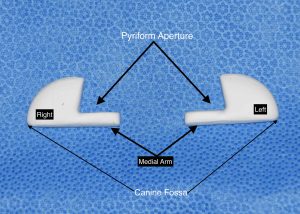Paranasal deficiency is a common midface aesthetic concern in which the base of the nose lacks sufficient horizontal projection. While it is common phenotypic feature of the Asian face it can occur in any ethnicity or gender. The treatment of paranasal deficiencies has its historic origins as an adjunctive procedure to augmentative rhinoplasty as nasal and midface deficiencies are often seen together. But paranasal augmentation is commonly done today as a stand alone procedure or as part of other facial augmentation procedures.

In the December 2023 issue of the Aesthetic Plastic Surgery journal an article was published in this topic entitled ‘ Three-Dimensional Morphological Study on the Effectiveness of Expanded Polytetrafluoroethylene Prosthesis in the Paranasal Augmentation’. In this paper the authors evaluated patients undergoing paranasal augmentation using ePTFE over a five year period. Pre- and postoperative 3D measurements were taken to assess the implant’s effectiveness by creating landmarks based on a coordinate system of the Frankfort horizontal plane. These landmarks included the nasal alar crest, subnasal point, upper lip, pogonion, glabella, sub-cheek, orbitale and tragion. Five segments, 4 ratios, and 3 angles were measured based on it.
The significant increase of segments, ratios, and angles indicated that paranasal augmentation does indeed increase the projection of the paranasal area. The paranasal augmentation caused a significant decrease of the protrusion difference between paranasal base and upper lip, forehead, and chin which were shortened after surgery. The average size of implant was 6.54?±?1.02 mm, and the average increase of paranasal height was 4.38?±?1.04 mm postoperatively. This difference means the sagittal elevation of the paranasal base seen was 2/3s that of the implant’s thickness.
Paranasal augmentation using ePTFE could effectively increase paranasal height and the thickness chosen and//or carved should take into consideration this 1/3 loss of height after implantation.
Dr. Barry Eppley
World-Renowned Plastic Surgeon


